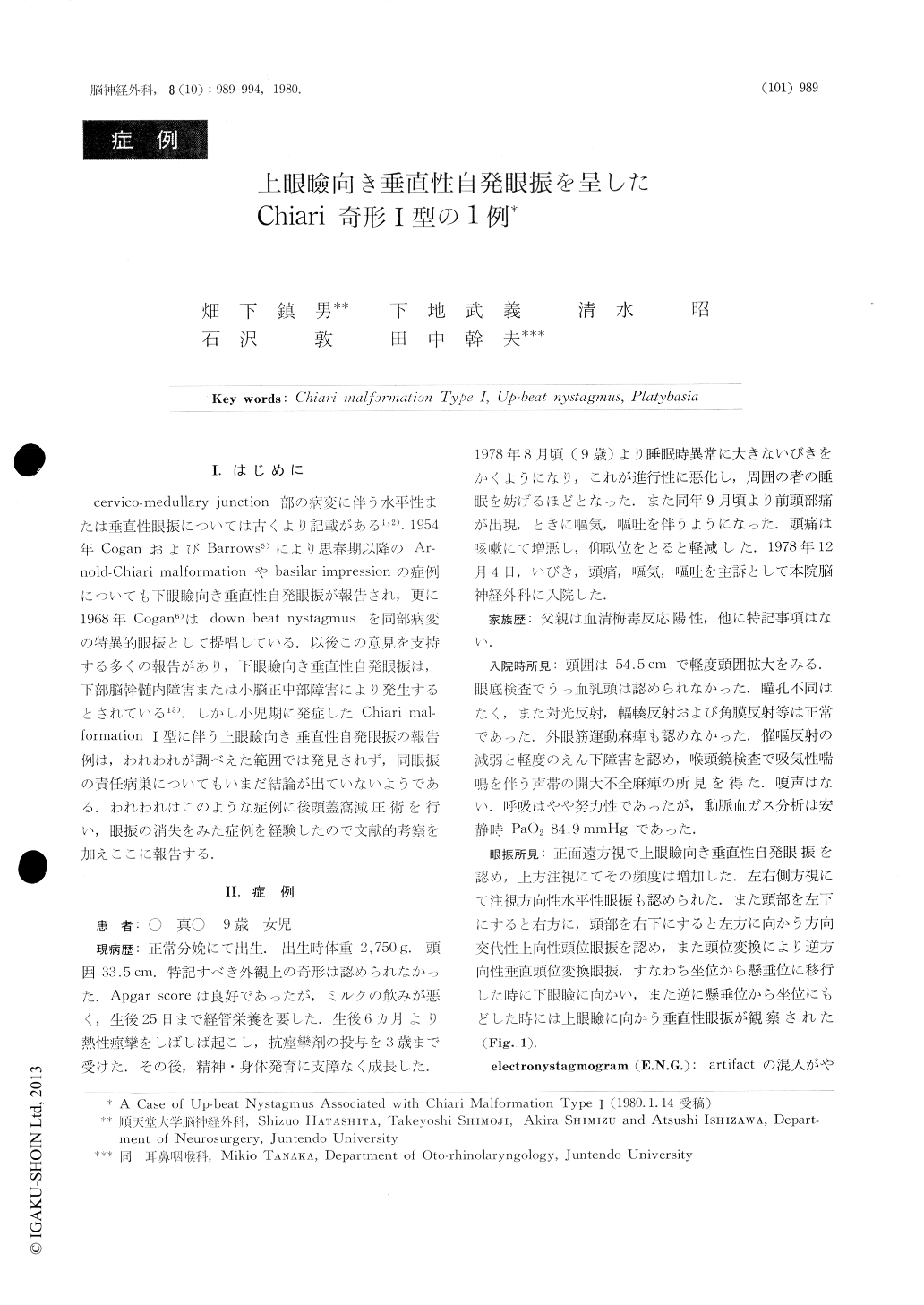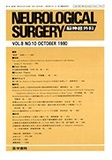Japanese
English
- 有料閲覧
- Abstract 文献概要
- 1ページ目 Look Inside
I.はじめに
cervico-medullary junction部の病変に伴う水平性または垂直性眼振については古くより記載がある1,2).1954年CoganおよびBarrows5)により思春期以降のArnold-Chiari malformationやbasilar impressionの症例についても下眼瞼向き垂直性自発眼振が報告され,更に1968年Cogan6)はdown beat nystagmusを同部病変の特異的眼振として提唱している.以後この意見を支持する多くの報告があり,下眼瞼向き垂直性自発眼振は,下部脳幹髄内障害または小脳正中部障害により発生するとされている13).しかし小児期に発症したChiari malformation I型に伴う上眼瞼向き垂直性自発眼振の報告例は,われわれが調べえた範囲では発見されず,同眼振の責任病巣についてもいまだ結論が出ていないようである.われわれはこのような症例に後頭蓋窩減圧術を行い,眼振の消失をみた症例を経験したので文献的考察を加えここに報告する.
A case of Chiari malformation type 1 with sign of upbeat nystagmus was reported. The patient was a 9-year-old girl who was admitted to the Department of Neurosurgery with the chief complaints of snoring and headaches. The neurological examination on admission revealed a lower cranial nerve disturbance bilaterally and upbeat nystagmus in the primary ocular position that increased in amplitude upon gazing upward, and horizontal nystagmus on gazing laterally.
The skull tomogram showed platyhasia. The vertebral arteriogram and the pneumoencephalotomogram showed downward displacement of cerebellar tonsils to the level of C2.

Copyright © 1980, Igaku-Shoin Ltd. All rights reserved.


